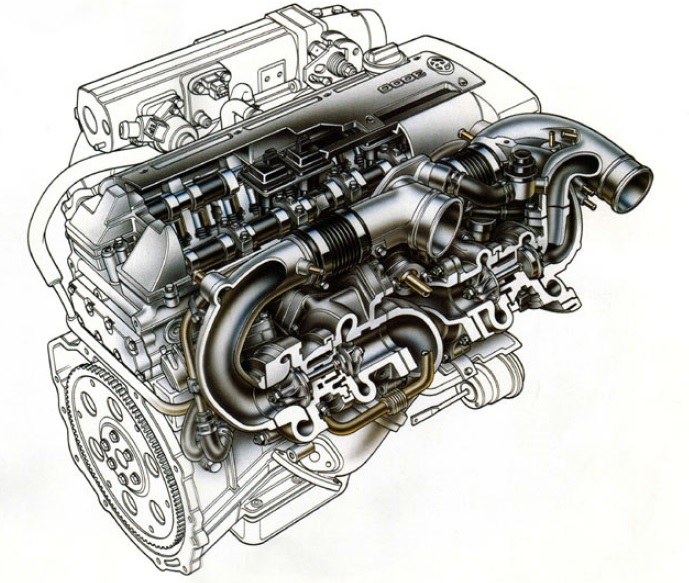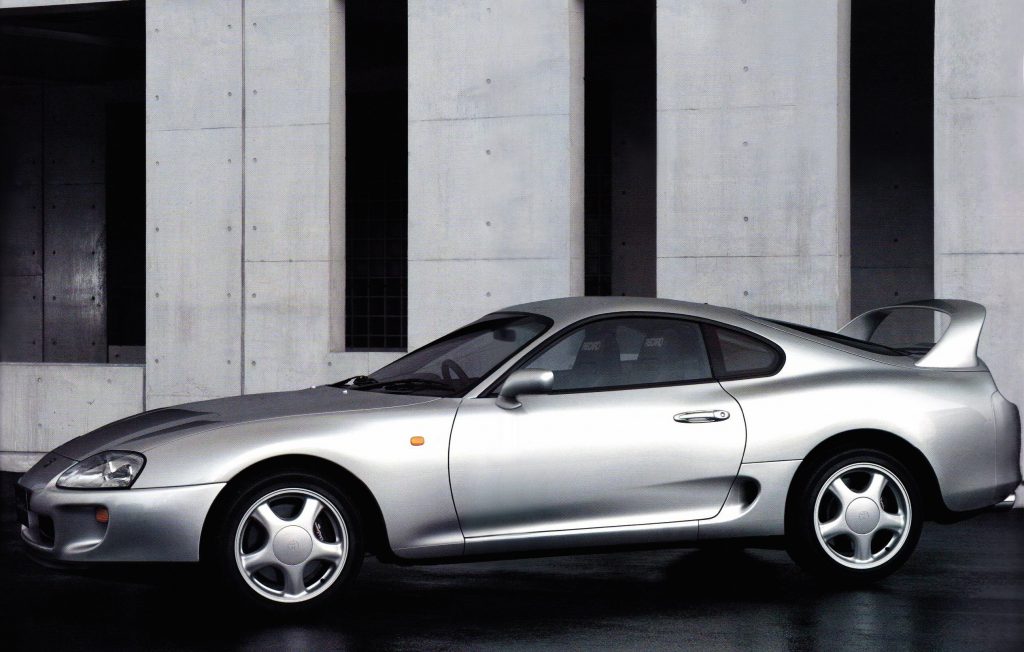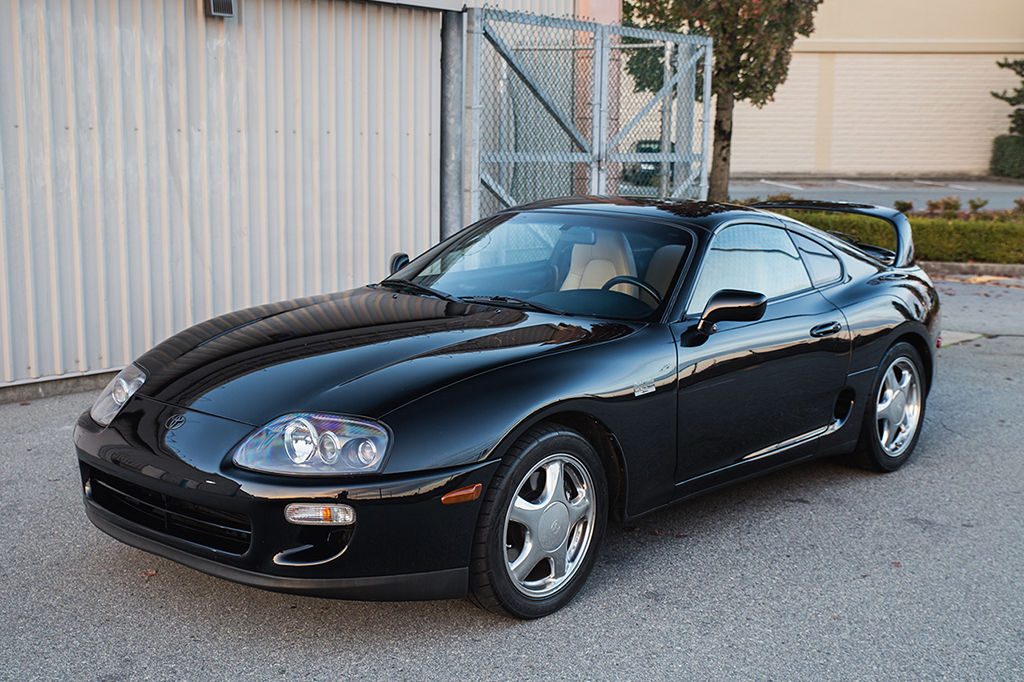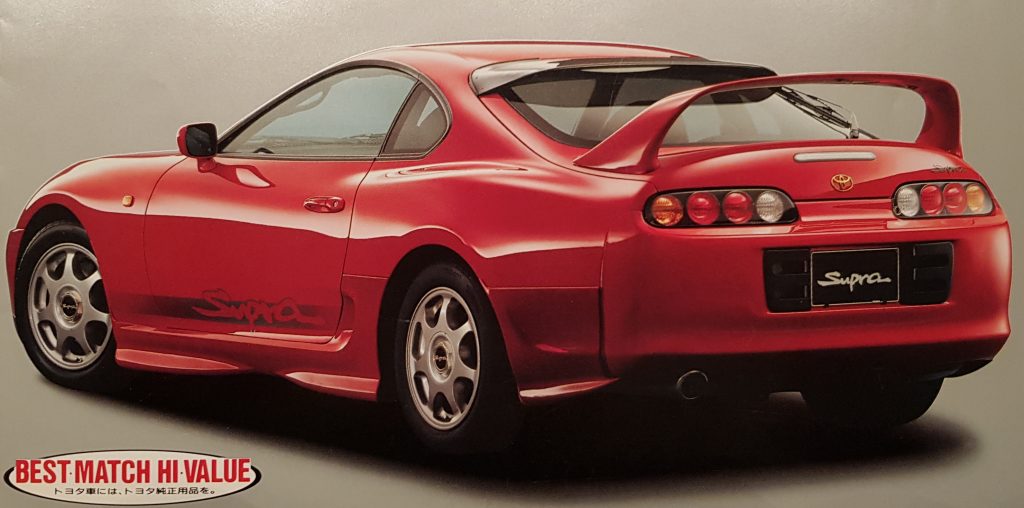Introduction

In 1993 Toyota presented the fourth incarnation of its top of the line sports car: The Supra JZA80. Over years the evolution of the Supra had been connected to the progress in development of Toyota’s M-Engine Family. Beginning with the presentation of the first Supra Generation in 1978, the “Celica XX” which only outside Japan carried the “Supra”-Badge, during 1986 when the Supra-Models were separated from the Celica-Range until the last generation appearing in 1993, Supras were mostly equipped with M-Type engines. Even the Supra’s great-grandfather 2000GT used a first-evolution M-Engine.
This engine’s design wasn’t capable of modern engineering requirements in the late 80’s. Higher and higher power outputs were demanded from the M-Engine. In it’s seventh release, the 7M-GTE, power output was raised up to 238hp by using turbocharger technology. The 7M-GTE suffered from overheating issues caused by its high power output in combination with the motor block’s ancient design.
Toyota’s simple answer was to replace the M-Engine by a whole new straight six cylinder engine family fulfilling the requirements of the 1990’s automotive industry.
Birth of the JZ-Engine.
In 1990 Toyota unleashed the first stage as the 1JZ-GTE with a displacement of 2.5ltr and boosted up to 280hp by two turbochargers operating in parallel mode. In the Japanese market which it was exclusively sold in it replaced the 7M-GTE in the third generation Supra. From 1990 on the 7M was solely available in the export markets until MKIII Supra production ended in 1993.
The second evolution followed in 1991 when the 2JZ-GE was presented to the public in the body of the Toyota Aristo (known as the Lexus GS300 outside Japan). With 3ltr of displacement, a crankshaft with a total of 7 main bearings, eleven hollow-borrowed strut sections for better coolant transport and Toyota’s variable induction system ACIS (Acoustic Control Induction System) this engine maxed out at an already impressive 225hp.
But the real technical highlight was the 2JZ-GTE turbo engine with twin turbocharging.

Engineers declared war on turbo lag.
They used a technology hardly seen on gasoline powered engines used in passenger cars: Sequential Twin Turbocharging. The idea is to minimize inertia of the turbocharger by guiding the exhaust gas flow only through one turbine at lower revolutions. This trick improves responsiveness of the engine at lower revs compared to one using only one huge turbine. With rising air requirement at higher revs a second similar turbocharger is activated which results in parallel operation of both turbines similar to the operation of one large turbocharger.
With this sophisticated technology Toyota specified a maximum power output of understated 280hp corresponding to the gentlemen agreement Japanese manufacturers used to have back in these days.
Only the power rating for export markets showed this engine’s full potential: This engine maxes out at an astonishing 330hp@5600rpm according to German Industrial Standard DIN (320hp according to SAE standards) which makes it the most powerful Japanese engine of this period used in standard cars.
Even foreign rivals were not much of a competition for this engine: The Ferrari 348tb’s V8-Engine had a power output of 295hp, Porsche’s flat-six used in the 993 Carrera maxed out at 272hp, only the Turbo-Version of the 964-series had a power output of 360hp.
1992 was the launch year for the 2JZ-GTE in the Toyota Aristo A300. But following its sporty nature it was only a question of time until Toyota would present a superlative sportscar developed around this engine.
1993 was the birth year of the Supra JZA80.





